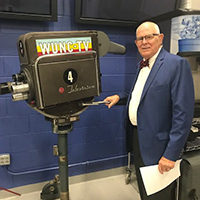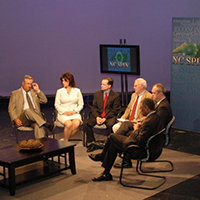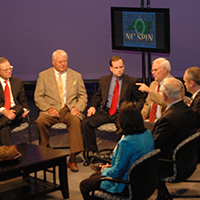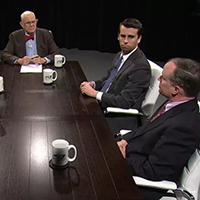Forecast improves
Published December 24, 2015
Editorial by Greensboro News-Record, December 22, 2015.
North Carolina saw strong job growth in November for the first time in months, the state’s Commerce Department reported last week.
That fits with an optimistic 2016 forecast delivered by Wells Fargo Bank economists.
Maybe the state’s sluggish recovery will pick up speed again. It’s the season of hope, after all.
The number of North Carolinians employed increased by 15,466 in November, according to the household survey. The employer survey put the number at 11,400. That’s good news either way after a slide in October.
From a year earlier, employment growth stands at more than 100,000. The bad news is, because of population growth and people returning to the labor force, the number of people unemployed has gone up, too. And the state’s unemployment rate of 5.7 percent is higher than it was a year ago and well above the national rate of 5.0 percent.
Unemployment has remained high largely because of the state’s rural areas, Mark Vitner, senior economist for Wells Fargo, said last week. And “rural areas account for a larger part of North Carolina’s economy than they do nationally,” Vitner told Richard Craver of the Winston-Salem Journal.
North Carolina also lags behind the national average in wages, and the gap is growing, according to Patrick McHugh of the left-leaning Budget & Tax Center.
Still, the Wells Fargo assessment is favorable — although primarily for the state’s largest cities, Charlotte and Raleigh.
Yet, “Both Greensboro and Winston-Salem have seen considerable economic momentum and improvement that seems to be independent of what is happening in Raleigh and Charlotte,” Vitner said.
He cited Qorvo and Honda Aircraft as Greensboro bright spots. Indeed, high-wage advanced manufacturing jobs have a big impact on the local economy.
In neighboring Rockingham County, however, the loss of more than 500 high-wage jobs at the MillerCoors brewery next year will hit hard.
Across the state, job growth in manufacturing has been positive for the past year, but it’s slower than in most other industry sectors. The strongest rate of growth has been in financial activities.
Housing is another indicator of prosperity.
“Housing market activity in Greensboro has been sluggish since the crisis,” the Wells Fargo report said. “Single-family permits have picked up slightly over the year, while multi-family permits have moderated.”
The culprit in the Triad’s tepid housing market has been its “persistently slow population growth and older population.”
Charlotte and Raleigh, in contrast, are two of the fastest-growing cities in the country. They’re full of young professionals and entrepreneurs. They offer attractive amenities, including major-league sports, theaters, museums and vibrant downtowns. Charlotte claims a growing 21st century mass-transit system, and Triangle cities have set their sights on building one, too. These cities account for the bulk of the state’s economic growth, although Durham, Wilmington and Asheville also have done fairly well.
Greensboro and Winston-Salem have some urban attractions of their own, as well as universities, colleges and innovative business parks. There are signs of more improvements ahead. At the same time, too many people are mired in poverty and struggle to find decent jobs and provide food for their families. The state has been overly harsh in cutting unemployment benefits and denying expanded Medicaid coverage, which could make a difference.
Prospects also could be dimmed because of clouds over China and the European Union. We’d like to see stronger job growth and higher wages, but it’s good to be talking about a better year in 2016.
December 24, 2015 at 9:15 am
bruce stanley says:
What a great Christmas gift! Not only is the Carolina Comeback well underway, but the Greensboro News & Record is admitting it!!!!!







